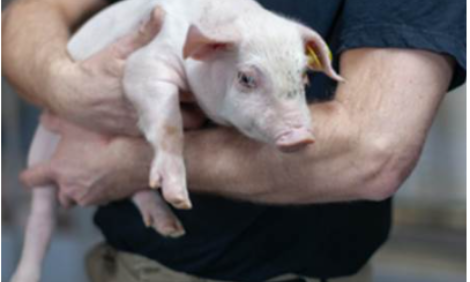



Summer Breeding Tips
Pig breeding company PIC offers tips on how to be cool by being prepared for high summer temperatures.Does this sound familiar? “The sows aren’t eating much and I can’t keep the temperature down in the barn.” If yes, then read on. If not, read on anyway. Summer is around the corner and unless you plan to move your operation to Alaska, you will need a plan to manage some of the challenges that hot weather brings.
All too often, humidity and temperature rises beyond the point at which anything preventative can be done to ensure adequate pig (and person) comfort and performance.
As temperatures rise, feed usage declines and a lethargic, listless hog inventory languishes in the heat. Often, the challenges associated with summer heat are not addressed until a crisis requires immediate action. Unfortunately, late action can result in a poor outcome. A well planned pre-season review of key summer management practices will help you to avoid a heat-related crisis.
The PIC Technical Services Team has indicated there may be some pitfalls caused by inadequate preparation or equipment. Here are some tips on how to ‘keep things cool’ prior to prolonged periods of hot weather.
Tips on Housing, Ventilation, and Husbandry
- Allow females full access to water in every department of the farm.
- Maintain all ventilation components to ensure proper and efficient air movement.
- Check fans, louvres and inlets weekly.
- Check fan belts weekly
- Any movement of pregnant sows to farrowing or weaned sows to the weaning area should be done as early in the day as possible to reduce stress.
- Make sure semen storage units are working well. Monitor with a high/low thermometre inside the storage unit and check often.
Tips on Breeding and Gestation
- Increase gilt flow by 10 to 15 per cent for eight to 12 weeks. On a 2,500-sow farm with 50 per cent annual replacement rate, it equals an additional two to three gilts per week. Do not overcrowd gilts or lower selection criteria when adding animals.
- House P1 and thin sows together at weaning.
- Feed wean sows twice per day.
- Consider culling older (P5+) sows or sows in extremely poor body condition.
- If this will not affect breeding target, heat no service sows that come into heat before day 2 post-weaning and from days 7 to 14 post-weaning.
- Heat-check weaned sows, gilts, and 21-day bred group twice per day.
- Start boar exposure to wean sows the day of weaning.
- Leave boars in front of weaned sow after heat check / breeding for one hour.
- Heat check open or opportunity sows once a day.
- Use two boars during breeding.
- Second boar should be five feet (1.52 metres) behind the first boar for extra stimulation after the insemination.
- One boar can stimulate four sows at a time. Do not inseminate more than four sows at once.
- Do not over-condition sows in gestation.
Tips on Farrowing
- Maximise lactation feed intake.
- Full feed from days 2 to 3 after farrowing.
- Early identification of off-feed sows: take the temperature of sows the day after farrowing and treat those with a temperature of 103°F (39°C) or above.
- Wet feed can be an option to maximise feed intake but it has to be properly managed.
- Load gilts together in farrowing.
- Provide gilts with extra attention during and after farrowing.
- Be prepared to assist more sows in the farrowing process than in cooler months.
- Desired farrowing room temp is 65°F (18°C) after day 7 post-farrowing.
- Manage room to maximise sow comfort.
- Early wean young sows that start to lose too much weight in farrowing.








